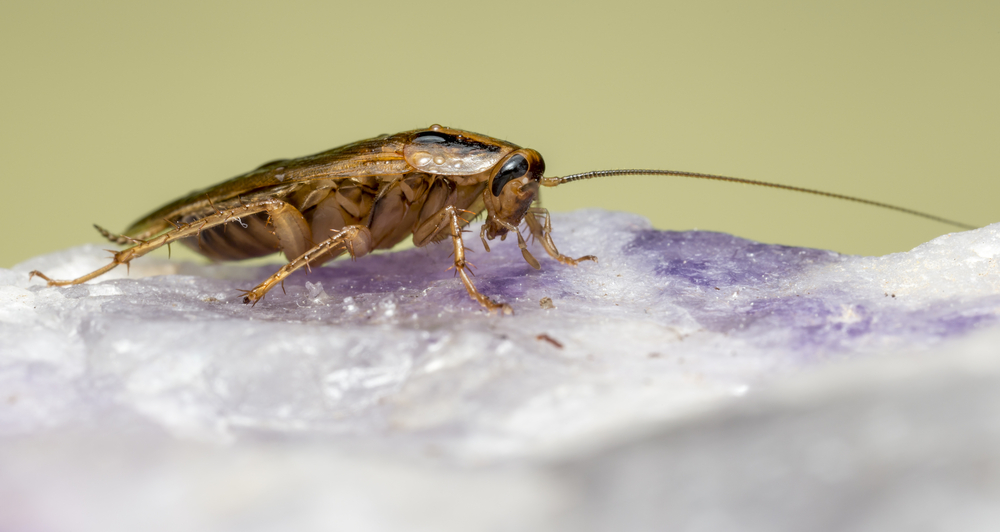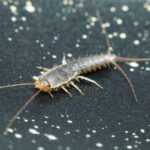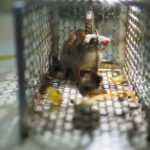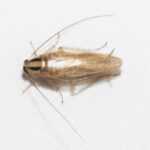Top Tips for Controlling German Cockroaches Effectively
Dealing with German cockroaches can be a nightmare. These pests carry diseases and can infest your home quickly. In this article, you’ll learn to spot German cockroaches, understand their behavior, recognize infestation signs, and apply control measures.
- German cockroaches thrive in warm, humid environments like kitchens and bathrooms, making them challenging to control due to their ability to hide in dark crevices.
- A comprehensive pest control strategy should include sanitation practices, chemical control, and integrated pest management (IPM) to effectively manage German cockroach populations.
- Preventing future infestations requires sealing entry points, maintaining cleanliness, and conducting regular monitoring to reduce potential hiding spots.
Understanding German Cockroaches
The German cockroach, scientifically known as Blattella germanica, is the most common cockroach species found worldwide. These insects thrive in warm, humid environments, making kitchens and bathrooms their preferred habitats. Adult German cockroaches are light brown to tan, featuring two dark stripes running lengthwise along their back, which makes them easily identifiable. Female German cockroaches tend to be darker in color than their male counterparts.
German cockroaches are known for their nocturnal behavior, often emerging at night to search for food. They are omnivorous, with a strong preference for sugary foods, grease, starch, and meat. This dietary flexibility contributes to their German cockroach survival and rapid population growth.
These pests are commonly found in modern indoor environments such as homes, restaurants, and hospitals. Their ability to hide in dark, moist cracks and crevices makes them particularly difficult to control.
German Cockroach Life Cycle
A thorough understanding of the German cockroach life cycle enhances pest control efforts. The entire life cycle of a German cockroach can be completed in approximately 100 days, encompassing three main stages: egg, nymph, and adult. Female German cockroaches are prolific breeders, capable of producing multiple egg cases throughout their lifetime, each containing numerous eggs. This rapid reproduction can quickly lead to a severe infestation if not properly managed.
The life cycle begins with the egg stage, progresses through the nymph stage, and culminates in the adult stage. Each of these stages presents unique challenges and opportunities for controlling German cockroach populations. Knowledge of these developmental stages allows homeowners to implement more effective pest control strategies.
Egg Stage
The egg stage is the beginning of the German cockroach’s life cycle. The egg case, known as an ootheca, is approximately 5/16 inch long and 1/8 inch high, protecting the developing eggs. Female German cockroaches carry their eggs attached to their abdomen until they are ready to hatch, which typically takes about four weeks. Each female can produce 4 to 6 egg cases in her lifetime, with each case containing about 30 to 40 eggs.
Detached egg cases typically do not hatch unless they are within one to two days of hatching. Targeting both adult females and their egg cases during this stage is vital to prevent the emergence of new cockroach generations.
Nymph Stage
After the eggs hatch, the German cockroach nymphs enter the nymph stage. Nymphs are immature cockroaches that undergo 5 to 6 molts before reaching adulthood. Initially, nymphs are white but gradually darken after each molt, starting to resemble adult cockroaches but lacking fully developed wings. Nymphs measure between 1/8 to 9/16 inch (3 to 14 mm) and are characterized by their smaller size and absence of wings.
This developmental phase is crucial as nymphs constitute the bulk of the cockroach population during growth, often accounting for approximately 80% of active populations. To prevent nymphs from maturing into breeding adults, pest control efforts must address this stage.
Adult Stage
The adult stage is the final phase of the German cockroach life cycle. Adult German cockroaches are light brown to tan and measure between 11 to 16 millimeters in size. Males are slender with a tapered end, while females are wider with a rounded end. These adults can live for about 5 to 7 months under optimal conditions, with females having a life expectancy ranging from 140 to 280 days, and males living between 90 and 140 days.
Adult German cockroaches are responsible for reproduction and can rapidly increase the population through continuous breeding. Implementing effective control measures requires an understanding of their behavior and lifespan.
Signs of a German Cockroach Infestation
Early recognition of a German cockroach infestation can prevent a minor problem from escalating. One of the most common indicators is the presence of droppings, which resemble pepper-like specks and are often found on surfaces like countertops. Additionally, you might find empty egg cases, known as oothecae, which are clear signs of ongoing reproduction.
Fecal stains left by German cockroaches may appear as dark brown spots or smears in corners or along door tops. These stains, along with droppings and egg cases, signal an infestation that requires immediate action.
Health Risks Posed by German Cockroaches
German cockroaches are not just a nuisance; they pose significant health risks. These pests can carry and spread bacteria and pathogens, potentially leading to diseases like diarrhea, dysentery, typhoid fever, and cholera. Their droppings, saliva, and body parts can contaminate food and surfaces, increasing the risk of foodborne illnesses. Additionally, while German cockroach bites are rare, they can occur, further highlighting the need for effective pest control.
The allergens produced by German cockroaches can cause severe allergic reactions and asthma attacks, particularly in children and individuals with pre-existing respiratory conditions. Exposure to these allergens can result in dermatitis, itching, and swelling of the eyelids. Long-term exposure to cockroach allergens is linked to chronic respiratory issues and can exacerbate existing health problems.
Due to their rapid reproduction and tendency to infest various environments, German cockroaches pose significant long-term health risks. Immediate control and eradication of German cockroaches are crucial for maintaining a healthy living environment.
Effective Control Methods for German Cockroaches
Controlling German cockroaches effectively requires a comprehensive approach that combines sanitation, chemical control, and integrated pest management (IPM). Relying solely on insecticide sprays can lead to ineffective management and increased resistance among cockroach populations. Implementing a strategic combination of methods ensures successful eradication.
Cleanliness and proper sanitation form the foundation of effective pest control. Baits and insecticide treatments play a crucial role in reducing cockroach populations.
IPM combines multiple strategies to enhance effectiveness and prevent resistance, making it an essential component of any pest control plan.
Sanitation Practices
Proper sanitation serves as the first line of defense against German cockroach infestations. Store food in airtight containers or refrigerate it to deter cockroaches from accessing food sources. Clean up crumbs and spills regularly, and remove trash and recycling daily to minimize food and water sources.
Clean floors, cabinets, and behind appliances periodically to eliminate potential hiding spots for cockroaches. Repair leaks and eliminate moisture sources to make the environment less appealing. Regular vacuuming and minimizing clutter can significantly reduce cockroach populations and prevent infestations.
Chemical Control Options
Chemical control options are an essential part of any German cockroach control strategy. Available insecticides include organophosphorous, carbamate, pyrethroid, amidinohydrazone, insect growth regulators, inorganic, microbial, and botanical options. Baits are considered the most effective formulation for controlling cockroach populations.
Cockroach baits commonly contain several active ingredients. These include fipronil, abamectin, indoxacarb, hydramethylnon, and dinotefuran. Insecticides specifically designed for cracks and voids can lead to better control of cockroach populations. Follow-up treatments based on inspection and sticky trap results are essential for maintaining control.
Integrated Pest Management (IPM)
Integrated Pest Management (IPM) combines multiple control strategies to effectively manage and reduce German cockroach populations. Regular inspections, typically every 2 to 4 weeks, are crucial to monitor progress and adjust strategies as needed.
Combining sanitation practices, chemical controls, and regular monitoring enhances effectiveness and prevents resistance. IPM is a sustainable approach that ensures long-term control and eradication of cockroach infestations.
Preventing Future Infestations
Preventing future German cockroach infestations involves sealing cracks and crevices to prevent entry. Sealing cracks and crevices reduces harborage for cockroaches. This includes areas along countertops, baseboards, and plumbing. Prevent cockroach entry by closing off entry points, caulking gaps, fixing leaky pipes, and reducing moisture.
Regular decluttering reduces hiding spots for German cockroaches and minimizes cockroach harborages. Ongoing monitoring and follow-up inspections every 2 to 4 weeks are essential components of an integrated pest management approach.
These preventive measures will help keep your home free from these pesky invaders.
Understanding the life cycle, signs of infestation, health risks, and effective control methods for German cockroaches is crucial for maintaining a healthy living environment. By implementing proper sanitation practices, utilizing chemical control options, and adopting an Integrated Pest Management (IPM) approach, you can effectively control and prevent German cockroach infestations.
If you are struggling with a German cockroach infestation, consider contacting a professional. They can provide you with the expertise and solutions needed to eradicate these pests and protect your home. Don’t let German cockroaches compromise your health and comfort—take action today.
Frequently Asked Questions
How do you get rid of German cockroaches?
To effectively eliminate German cockroaches, utilize a high-quality roach bait like Invict Gold in conjunction with an insect growth regulator (IGR) such as Tekko Trio Foam, which will kill adult roaches and prevent their reproduction. This combined approach will yield the best results in managing the infestation.
Why am I seeing German cockroaches?
You are likely seeing German cockroaches because they thrive in warm, humid environments near food and water sources, often entering homes by hitchhiking on items like grocery bags, boxes, and furniture. It is essential to take preventive measures to eliminate potential entry points and reduce their habitat.
Are German cockroaches the hardest to get rid of?
German cockroaches are indeed one of the hardest pests to eliminate due to their rapid reproduction and resilience. Effective control often necessitates professional intervention to manage their populations effectively.
How do I identify a German cockroach infestation?
To identify a German cockroach infestation, look for droppings that resemble pepper specks, empty egg cases, and fecal stains appearing as dark spots or smears in corners and along door tops. These signs indicate an active infestation that requires immediate attention.
What health risks do German cockroaches pose?
German cockroaches pose significant health risks by carrying bacteria and pathogens that can lead to diseases such as diarrhea and typhoid fever. Additionally, they produce allergens that may trigger severe allergic reactions and asthma attacks.





